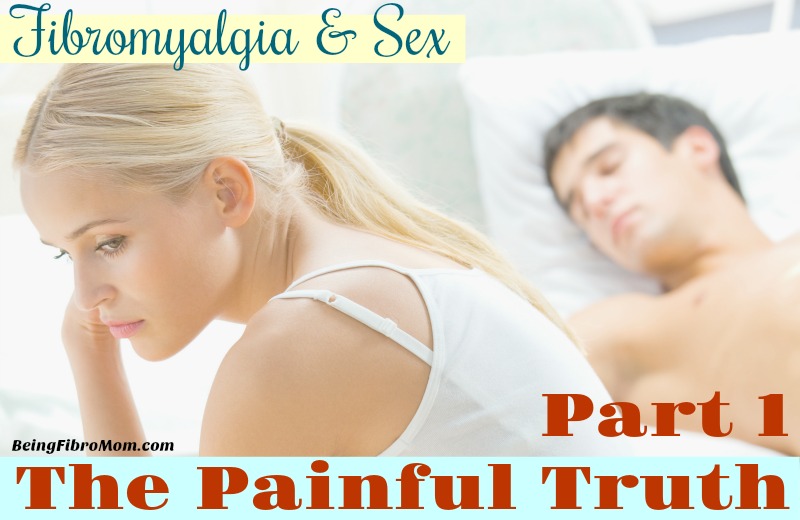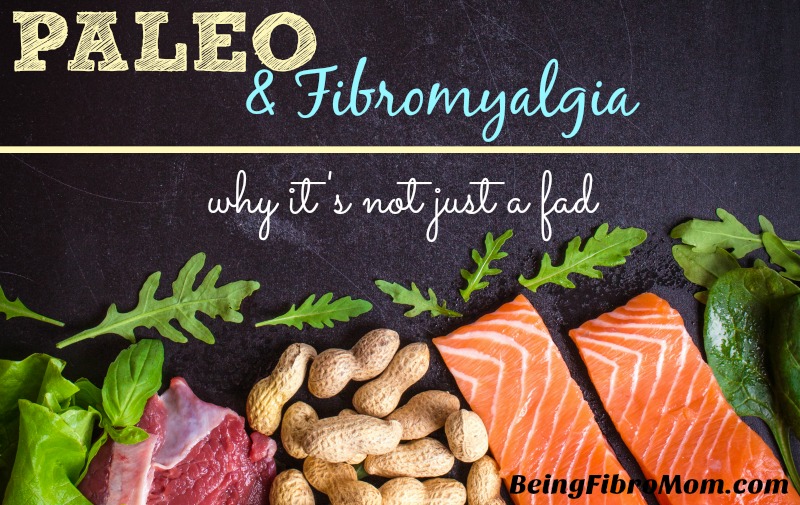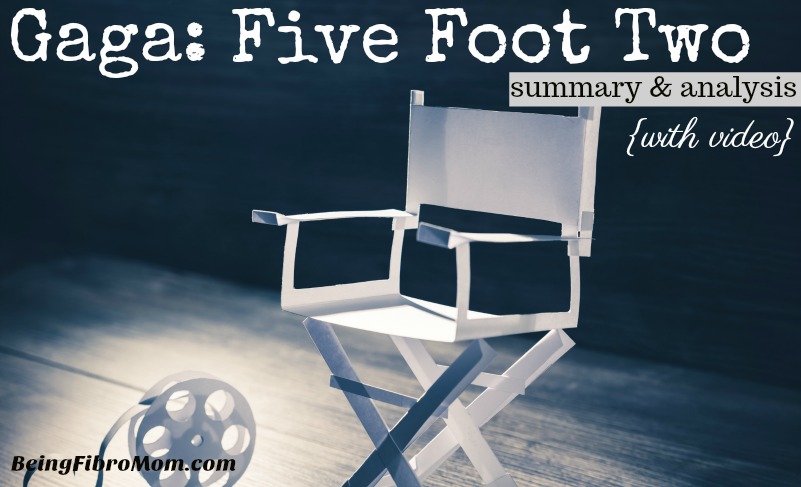This week’s Fibro Live show is answering viewers’ questions about fibromyalgia. Join the discussion each Tuesday at Noon EST at Being Fibro Mom on Facebook as we talk about the latest fibromyalgia news, research, hot topics, treatments, books, and more.
{Scroll down for the video of this show.}

Disclosure: I get commissions for purchases made through links in this post, but these are products I recommend and have verified and/or used.
Answering viewers’ questions about fibromyalgia
These questions are listed as they are addressed in the video (included at the bottom of this post).
Do fibromyalgia symptoms get worse over time?
Fibromyalgia is NOT a progressive illness. A progressive illness is one that affects the body’s ability to function over time, but the condition itself does not break down any parts of the body over time. Symptoms can worsen, but that does not mean fibromyalgia is a progressive illness.
Symptoms can also worsen if left untreated, but that is expected if a condition is neglected. With the proper treatment and care, fibromyalgia can be well managed and symptoms can even go away for some individuals.
More about this subject can be found in Donna’s article Ask the Doctors: Is Fibromyalgia Progressive? . In this article, Donna presents this question to nine of the top fibromyalgia doctors, and their responses are insightful and informative to how fibromyalgia affects the body.
What exercises are okay for fibromyalgia?
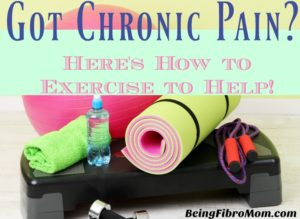
Finding out which exercises are best for someone living with fibromyalgia takes patience and dedication. It’s a trial and error process discovering what is okay for your body and what is not okay. For some, walking may be okay and may even improve symptoms. For others, light yoga and stretching may be better. Take the time to find out which is best, and do it slowly.
There is a great infographic from Pain Management Injury Relief titled How to Exercise with Chronic Pain. It lists great ways to get started with exercise including how often and how long to do each exercise.
If you are looking to exercise with your kids, Shirley wrote a special article 5 Things to Know: Exercising with Your Kids When You Have Fibromyalgia.
Jen Reviews has an excellent article 18 Amazing Benefits of Yoga, According to Science.
Are stomach issues normal with fibromyalgia?
 Yes! Having stomach issues are normal with fibromyalgia. One of the main symptoms of fibro is irritable bowel syndrome (IBS), painful menstrual cycles, painful intercourse, and even painful bladder syndrome (PBS). In fact, according to New Life Outlook, 70% of fibromyalgia thrivers suffer from IBS.
Yes! Having stomach issues are normal with fibromyalgia. One of the main symptoms of fibro is irritable bowel syndrome (IBS), painful menstrual cycles, painful intercourse, and even painful bladder syndrome (PBS). In fact, according to New Life Outlook, 70% of fibromyalgia thrivers suffer from IBS.
In The FibroManual by Dr. Ginevra Liptan, this affect on the digestive tract is explained. Fibromyalgia affects the nervous system which is comprised of two smaller systems: the sympathetic and parasympathetic nervous systems. The sympathetic system is usually activated making the parasympathetic system slower to respond. The digestion system is controlled by the parasympathetic system making the stomach sluggish and not functioning in the full capacity it should be functioning.
Leaky gut is also an issue when listing digestive problems. Leaky gut can cause many symptoms of fibromyalgia. According to Dr. Axe from Food is Medicine, leaky gut can cause joint pain, fatigue, bloating, thyroid disease, autoimmune conditions, headaches, weight gain, and more. Treating leaky gut will most likely help reduce your symptoms of fibromyalgia as well.
Can marijuana be used to treat fibromyalgia symptoms?
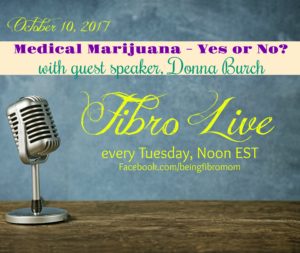
This question is asked a lot, so I’ve decided to reach out to Donna Burch about discussing the subject on a future Fibro Live show. Click here to watch the video about medical marijuana.
How can loved ones that do not live close be supportive of me living with fibromyalgia?
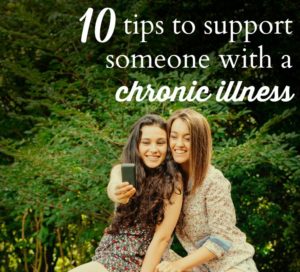
This was an excellent question and the responses I got from some viewers were great. Some of the suggestions include:
care package
gift cards to help with dinners (think pizza delivery places or takeout)
gift certificates for massage therapy
food delivery service
words of love and support
How do you stretch the muscles that are riddled with myofascial trigger points when there is a tender point in the same general area without aggravating the tender spot?
 Knowing the difference between trigger points and tender points is good to know when tackling this question. The article Fibromyalgia Community Leaders Discuss Gaga:Five Foot Two to learn more about the differences between the two as well as what trigger point injections are.
Knowing the difference between trigger points and tender points is good to know when tackling this question. The article Fibromyalgia Community Leaders Discuss Gaga:Five Foot Two to learn more about the differences between the two as well as what trigger point injections are.
I did not know the answer to this question, so I turned to Fibromyalgia Coach, Tami Stackelhouse, for her expertise. She also found this a difficult question, but here is her response:
“That second one is so tough to answer without knowing the exact situation. In general, I would say to go slow, don’t be aggressive. Use things like heat and magnesium lotion to soften up the muscle first. Maybe even a hot Epsom salt bath and stretch in the bath.”
Do you deal with major breast pain and tenderness?

Yes, I do deal with breast pains and tenderness. My physician said the tenderness and pain can be due to menstrual cycles, but I’m curious if it’s linked to fibromyalgia. I was surprised at what I discovered during my research.
The breast pain some women have with fibromyalgia is called mastalgia, and occurs in about 80% of women. According to Fibromyalgia News Today Fibromyalgia Symptoms Can Include Breast Pain, mastalgia could possibly be a syndrome in fibromyalgia. The article does include research findings from a study conducted to investigate the coexistence of mastalgia and fibromyalgia. It also states that mastalgia has two forms: cyclic which is associated with the menstrual cycle and non-cyclic which is outside of the menstrual cycle.
Thanks to this question, I have learned something new about fibromyalgia. I tell ya, I’m always learning about this condition even after ten years!
Does anyone have any mattress recommendations?

This is an excellent question because getting good quality sleep is better than the number of hours you sleep. It also needs to provide adequate support for your aching body. When looking for a mattress, make sure it’s not too firm or putting on too much pressure on tender points. Make sure it’s not too soft or too firm. A viewer recommended the Lily Bed, but I have not used it.
When sleeping on your stomach, be sure to place a pillow under your hips. This gives your lower back more support and prevents it from dipping too low (this causes strain on the back muscles making it painful to move the next morning). When lying on your side, try placing a pillow between your knees to give adequate support to your hips.
The Better Sleep Council recommends replacing your mattress every 7-10 years.
Does acupuncture help?

Acupuncture is an alternative treatment for many different chronic conditions. It is based on an old Chinese therapy practice that helps center the body’s energy. This practice involves placing long, fine needles in certain locations of the body. After left for 20 to 30 minutes, they are removed. This therapy should be down by a trained professional because of the risks with acupuncture.
Results of acupuncture is evenly mixed with some having improvements in symptoms and others having no change in symptoms. Improved symptoms included anxiety, depression, pain, and fatigue. Most insurance plans do cover acupuncture, but with limits. Please consult with your health insurance carrier before seeking treatment.
Read more about Skeptical at First, Acupuncture Soothed My Fibromyalgia Symptoms.
How do others deal with fibromyalgia and Lupus?
 Living with two complicated illnesses such as fibromyalgia and lupus can be frustrating and confusing. When experiencing a symptom, the source of it can be unclear – is it the lupus causing it or the fibromyalgia? Treating the two are entirely different despite the two conditions having similar characteristics.
Living with two complicated illnesses such as fibromyalgia and lupus can be frustrating and confusing. When experiencing a symptom, the source of it can be unclear – is it the lupus causing it or the fibromyalgia? Treating the two are entirely different despite the two conditions having similar characteristics.
Rheumatologist Robert Shaw answers a patients question regarding the possibility of having both fibromyalgia and Lupus. Read his response here.
What about CBD oil for fibromyalgia symptoms? What are the results?
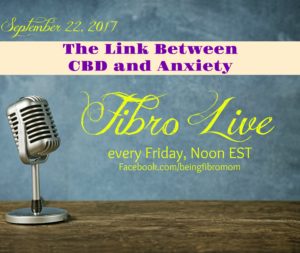
According to Medical Marijuana, Inc, cannabidiol, or CBD, is a component found in cannabis and occurs naturally in significant amounts. While extracting CBD oils from marijuana plants are illegal, extracting CBD oil from hemp plants are not. However, CBD oil is not approved by the Food and Drug Administration (FDA).
Hemp plants are grown more for the CBD compound rather than the THC compound. Generally, marijuana plants are grown for the THC compound (the stuff that makes you high). While extracting CBD oils from marijuana plants are illegal, extracting CBD oil from hemp plants are not.
Effects of CBD are not psychoactive like THC (won’t give you that high); has antioxidant, anti-inflammatory, and neuroprotective properties; relieves nausea; eases headaches; and relaxes muscle tension.
To read more about CBD oil and to see an infographic about the benefits of CBD, check out my article The Link Between CBD and Anxiety.
Does CBD oil help with neuropathy?

Discover CBD describes neuropathy in the article Does Cannabidiol Help with Neuropathy as “a condition where the nerve cells located throughout our body become damaged, and send pain signals even if we are not exposed to anything that would cause pain….Neuropathy can present with symptoms like constant pain, tingling, numbness, balance problems, temperature sensitivity, and sensitivity or pain from touching objects.”
Traditional method of treatments such as anti-inflammatory medications, painkillers, and antidepressants do not work for 42% of people living with neuropathy. This is where using CBD oil could prove to be beneficial.
Discover CBD also reports: “Another study by Hoggart et al. investigated CBD’s potential for pain relief, and included 234 people with peripheral neuropathic pain. The researchers found that the participants’ mean reported levels of pain decreased after 38 weeks of taking CBD, and more than half of the participants stated that their pain had been reduced by 30% or more. Naturally, caution must be used when generalizing these results, but they do suggest that CBD may affect neuropathic pain.”
Being a parent while living with fibromyalgia
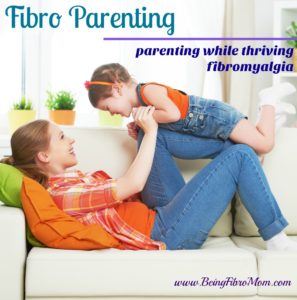
Parenting is hard. Parenting while living with fibromyalgia is another level altogether. We want to be the best parents we can be for our children while also caring for ourselves. To say ‘fibro parenting is creative’ is an understatement. It’s a type of parenting all on it’s own, and us fibro parents need to band together for support.
One of my focuses as a fibromyalgia advocate, is helping fibro parents be the best parents and fibro thriver they can be. There are a few resources and articles I’ve written about fibro parenting on this page Fibro Parenting Resources. This article also includes link to other fibro parents’ blogs, book reviews, and an online Christian Facebook group for women with chronic illness.
If you’d like to join the closed Fibro Parenting group on Facebook, click here. In this group we share our victories, struggles, resources, meal ideas, and more. The biggest support I receive is from the fibro parents in this group. There are some of the greatest individuals I’ve had the pleasure of meeting. So, what are you waiting for, fibro parent? Join us!
Telling your kids about fibromyalgia
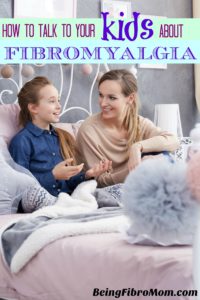
No matter how young they are, it’s important for your kids know about your illness especially how they can help you with it. Yep. Kids. You know – those little people running your house making your life lovingly chaotic? They are the ones that demand just as much attention and care as your fibromyalgia.
When talking to your kids about fibromyalgia it’s good to avoid big, confusing words. They don’t need all the details of the illness, but try explaining it in a way they can understand. Let them know it’s not their fault and you love them regardless of how you’re feeling. You can find other tips in the article How to Talk to Your Kids About Fibromyalgia which was originally published in The Fibromyalgia Magazine.
However you choose to talk with your kids about fibromyalgia, just talking to them can make a difference. Leaving them in the dark, as I did for quite some time, only leads them to ask more questions or even ask themselves if they are to blame. Include them in your life, even the part that is fibromyalgia.
Melissa Swanson, writer of Fibro Warriors ~ Living Life, has an invaluable book about how to explain fibromyalgia to your kids. Her book is called Ravyn’s Doll: How to explain fibromyalgia to your child. Fibromyalgia was explained well in kids terms in which they can understand – and even included the pronunciation – along with vibrant colors and likable colors. This is a must read for any fibro parent! It leads to the ongoing discussion of fibromyalgia, and allows children to grasp the concept of an invisible illness.
Families & Fibromyalgia with ISFN
 The International Support Fibromyalgia Network (ISFN) is an official 501(c)(3) organization with a mission to bring the fibromyalgia community together through education, awareness, research and advocacy.
The International Support Fibromyalgia Network (ISFN) is an official 501(c)(3) organization with a mission to bring the fibromyalgia community together through education, awareness, research and advocacy.
The program, Families & Fibromyalgia, is just one of the programs within ISFN. The program states, “We understand that family can either be painful or supportive and we hope to cut through the fibromyalgia guesswork by establishing a program built to service families directly with resources and expert leadership.”
As program director of Families & Fibromyalgia, my goal is to bridge the communication gap between fibro thrivers and their loved ones by creating useful content and expertise, host workshops and support group nights geared towards the whole family, and empower the family to be involved with advocacy training. We will post more information about the program as it continues to develop.
What are some medications for pain?

Medicinal option are over-the-counter (OTC) medicine or medicine prescribed by your physician. Medicines to help treat fibromyalgia symptoms include:
Over-the-counter medicines
acetaminophen: pail reliever, fever reducer (read more)
ibuprofen: anti-inflammatory, pain reliever, fever reducer (read more)
sleep aids: helps to fall asleep and stay asleep (examples include ZzzQuil, Unisom)
Prescribed medicines
antidepressants – helps relieve pain, depression, fatigue, and sleep problems
muscle relaxants – work in the brain to relax muscles
sleep aids – eases sleep difficulties
gabapentin – (read more)
The only prescribed medications approved by the Food & Drug Administration:
Lyrica: approved in 2007
Cymbalta: approved in 2008
Savella: approved in 2009
Can therapy be used for fibromyalgia?

Yes! Therapy in various forms can be beneficial to those living with a chronic illness. Therapy can include hot/cold therapy, physical therapy, water therapy, massage therapy, water therapy and myofascial release therapy. There may be more therapies, but these are the ones I will cover here.
Physical therapy: I have done physical therapy and it made most of my symptoms go away (except for the stomach issues). It was amazing! The therapist had me do stretches, a few light exercises, then she would conclude the session with myofascial release therapy.
Hot therapy: Using a heating pad or heat wrap is a great way to ease tight muscles. Apply the heating pad for 15 to 20 minutes at a time, and avoid falling asleep with it on. Moist heat, such as a hot shower or bath, is better than dry heat (heating pad). Using a heat wrap on the neck/shoulders area is perfect for sitting at the desk, watching television, or anywhere. Here’s a great one I use.
Cold therapy: Cold compresses can reduce swelling and inflammation as well as relieve muscle spasms and pain. There are various ways to make a cold pack should you not have one already. Use a frozen towel, a bag of frozen veggies, or ice in a ziplock bag. Always wrap the cold pack in a towel to avoid direct contact between the cold pack and skin.
Hydrotherapy: Hydrotherapy can include soaking in a bath or spa or doing pool exercises. A study conducted in 2008 concluded that hydrotherapy was effective in the management of fibromyalgia. There were improvements in pain, health status, and tender point count. Read more about the study here.
Here are 7 Physical Therapy Treatments to Try If you Have Fibromyalgia by Fibromyalgia News Today.
Experiencing difficult times with loved ones

When dealing with fibromyalgia, relationships can become strained. In the years leading up to my diagnosis, I did not realize how strained my marriage and other relationships were at the time. It wasn’t until I got a diagnosis and started healing that my husband told me just how fragile our marriage was at the time. I still regret neglecting the signs of trouble. However, I cannot go back and can only move forward. Our marriage has become stronger through our diagnoses. Not everyone is as blessed as we are, but do not give up hope.
I reached out to other chronic illness bloggers and asked them for some help in providing resources for relationships and chronic illness. There were lots of great articles shared, and here are just a few of them.
When Your Spouse Is Also Your Caregiver (+ Tips for Easing the Burden)
4 Things I Hate About Being a Full Time Carer
Relationships and Chronic Pain
Are you seeing a specialist for fibromyalgia?
 This is a great question and one that is asked by many fibro thrivers. When a physician goes through medical school, there is general medicine and specialized medicine such as rheumatology. Specialty medicine requires additional schooling that goes into the specifics of that area of medicine. These physicians are more of an expert in that area.
This is a great question and one that is asked by many fibro thrivers. When a physician goes through medical school, there is general medicine and specialized medicine such as rheumatology. Specialty medicine requires additional schooling that goes into the specifics of that area of medicine. These physicians are more of an expert in that area.
This is not to say that a primary care physician does not know about fibromyalgia. It means their specialty is not fibromyalgia. Your physician could know about fibromyalgia and be just as helpful (or even more helpful) than a rheumatologist. Sadly, there are rheumatologists and physicians that do not recognize fibromyalgia as a real condition.
In order to see a rheumatologist, you must be referred by your physician. Be sure if your insurance covers this visit before you schedule an appointment.
For more guidance on seeing a physician about fibromyalgia, please visit 10 Reasons to Fire Your Doctor!
Spirituality during healing

Depression is often experienced when living with fibromyalgia and many other illnesses. Depressive episodes can hit unexpectedly and leave us feeling lost and overwhelmed. Having a coping tactic to use during dark times can make recovery more quickly. One of the ways to cope is by using spirituality. Spirituality can include religion, prayer, mediation, art, or being in nature. For me, I relay heavily on faith.
Once I got diagnosed and started on my path to healing, I realized I needed something bigger, better to help me heal. Physically I was getting better, but mentally and emotionally I was lacking. Turning to my faith and relaying on daily prayers helped tremendously.
For scriptures on healing and what you can do with spirituality and healing, read Can Spirituality Help with Healing?
Gabapentin for fibromyalgia

There are many medications taken by fibromyalgia sufferers to help relieve their symptoms. Some of the medications are approved by the Food Drug Administration such as Lyrica (approved in 2007), Cymbalta (approved in 2008), and Savella (approved in 2009), but there are many other medications used to treat fibromyalgia symptoms. One of these medications is gabapentin for fibromyalgia.
Use caution when stopping this medication. The withdrawal symptoms are serious and can be dangerous.
Gabapentin is a medication commonly used to treat seizures in epileptic patients. It is also used to treat the burning sensation that may last after an attack of shingles as well as treatment of restless leg syndrome, more commonly known as RLS. Gabapentin is in the class of medications called anticonvulsants. It is also known as fanatrex, gabarone, gralise, and neurontin.
While gabapentin for fibromyalgia has not yet been FDA approved, those with fibromyalgia can still discuss this treatment option with their physician.
Freebies from the show
Fibro Diet Guide with printable charts

Fibro Live Show
Related Articles
